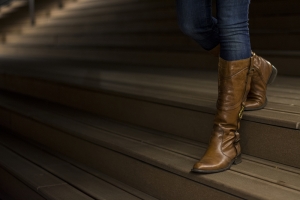Selecting the perfect belt is not just about style; it's also about ensuring a comfortable and secure fit. When it comes to achieving a custom fit, the key lies in accurate measurements. In this guide, we will walk you through the steps on how to measure for a custom-fit belt, ensuring that you find the ideal accessory for both style and comfort.
Step 1: Gather Your Tools
Before you start measuring, make sure you have the necessary tools on hand. You will need a flexible measuring tape, a mirror, and a belt that currently fits you well.
Step 2: Find Your Ideal Belt Placement
Decide where you want to wear your belt – whether it's on your waist or hips. Different placements can result in distinct fits, so be sure to choose the one that aligns with your personal style and comfort preferences.
Step 3: Measure Your Waist or Hips
If you're aiming for a waist belt, locate the narrowest part of your waist and measure it with the flexible tape. For hip belts, measure around the widest part of your hips. Ensure that the tape is snug but not too tight, allowing for a comfortable fit.
Step 4: Add Extra Length for Comfort
Once you have your waist or hip measurement, add a few inches to account for the overlap when the belt is fastened. This extra length ensures that the belt sits comfortably and allows for adjustments.
Step 5: Test the Measurement with a Belt
Take a belt that currently fits you well and lay it flat on a surface. Measure from the end of the buckle to the hole you use most frequently. This measurement should match the one you obtained in Step 4.
Step 6: Consider the Belt Width
Belt width is another crucial factor for a custom fit. The width should complement your body shape and the style of clothing you typically wear. Measure the width of your existing belts to determine the most flattering size for your custom-fit belt.
Step 7: Check for Customization Options
When shopping for a custom-fit belt, look for brands or artisans that offer customization options. This may include choosing the buckle style, material, and color. The ability to personalize these elements ensures your belt is not only a perfect fit but also a reflection of your unique style.
Conclusion
Achieving a custom fit for your belt is a simple yet crucial process that enhances both comfort and style. By following these steps and considering customization options, you'll be well on your way to finding the perfect custom-fit belt to complement your wardrobe. Whether you prefer a waist or hip placement, accurate measurements and thoughtful choices will result in a belt that not only looks good but feels just right.





